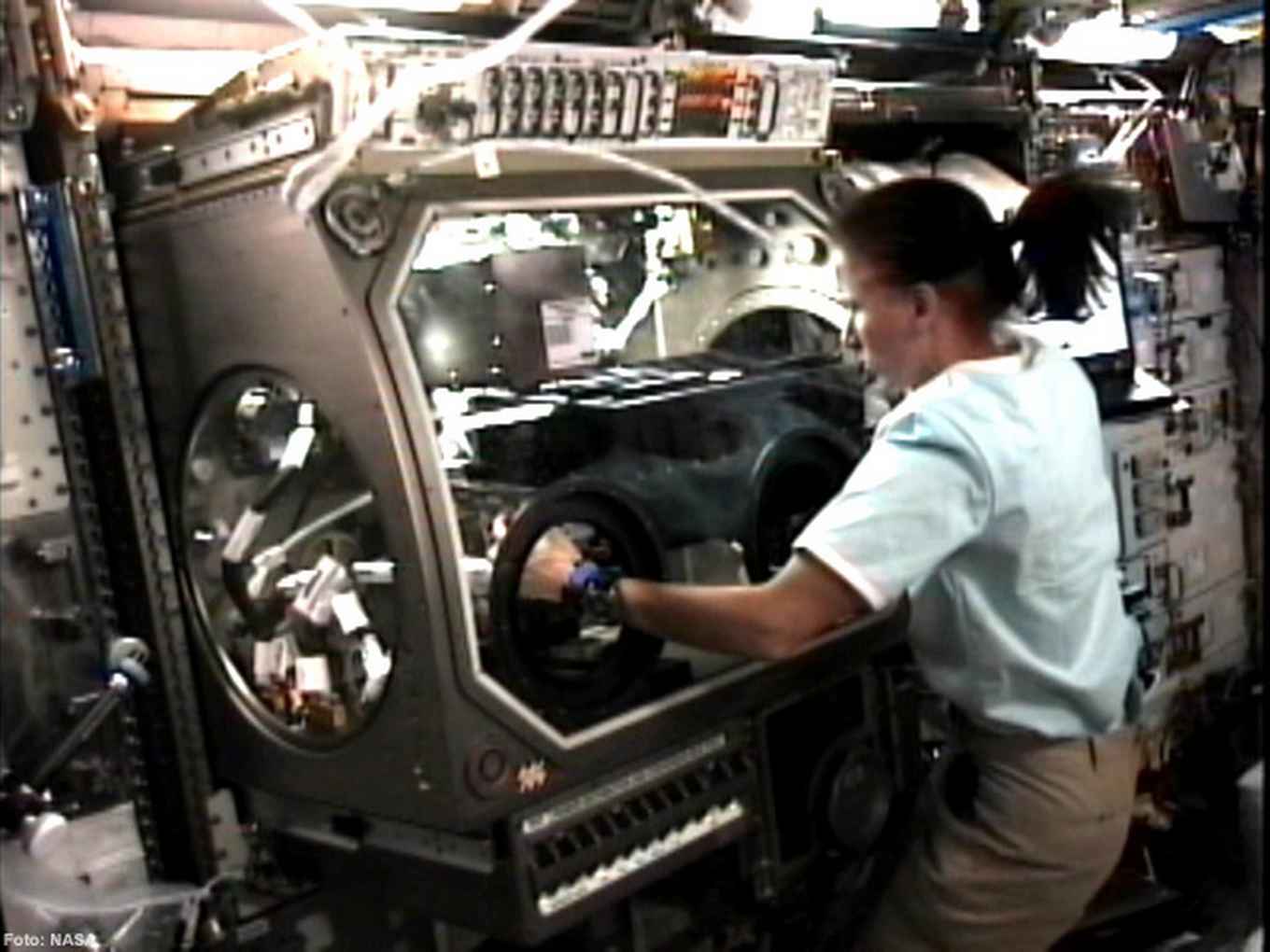Stacking nanospheres in space
17 December 2012

Scientists from the soft matter group at the UvA’s Institute of Physics worked with colleagues from the University of Milan and ESA European Space Agency to stack nanospheres into large clusters visible to the naked eye by applying a new type of adhesion energy – also known as critical Casimir forces – in an experiment conducted on board the International Space Station. This process could never have taken place on earth.
In the process, the researchers gained greater insight into the development process, which can be applied to grow larger photonic crystals. These photonic crystals will be key to the next generation of computers, in which light will play the role currently fulfilled by electrons.
The results of the study were published in scientific journal Physical Review letters on 10 December.
Forces on ships
Casimir forces are comparable to the forces exerted on two ships sailing in close vicinity. Only a few of the many ocean waves will fit in the space between the two ships. This means the pressure exerted on the outside of the two ships will be greater than that exerted by the limited number of waves driving them apart. As a result, the two ships will be pushed towards one other: this effectively constitutes an attractive force.
The nanoparticles in the experiment – which have been dissolved in a liquid mixture – are subjected to a similar attractive force when they approach each other, due to local concentration differences in the two liquid components. This critical Casimir force is highly dependent on the liquid's temperature. By varying the temperature, researchers can assess how the strength of the attractive force affects the form and structure of the clusters.
Here on earth, only one single type of cluster is formed under the influence of gravity. This formation process is not affected by the strength of Casimir forces. A case in point would be the formation of small snowflakes. As researchers found, the conditions in space allow for the formation of far greater clusters, which can take on compact spheroid forms, flat open shapes and even linear structures, depending on the strength of the Casimir forces. As we know from comparisons with experiments on earth, gravity affects the growth process itself as well as the form and structure.
Publication details
Sandra J. Veen, Oleg Antoniuk, Bart Weber, Marco A. C. Potenza, Stefano Mazzoni, Peter Schall, Gerard H. Wegdam: Colloidal Aggregation in Microgravity by Critical Casimir Forces. Physical Review Letters (10 December 2012).